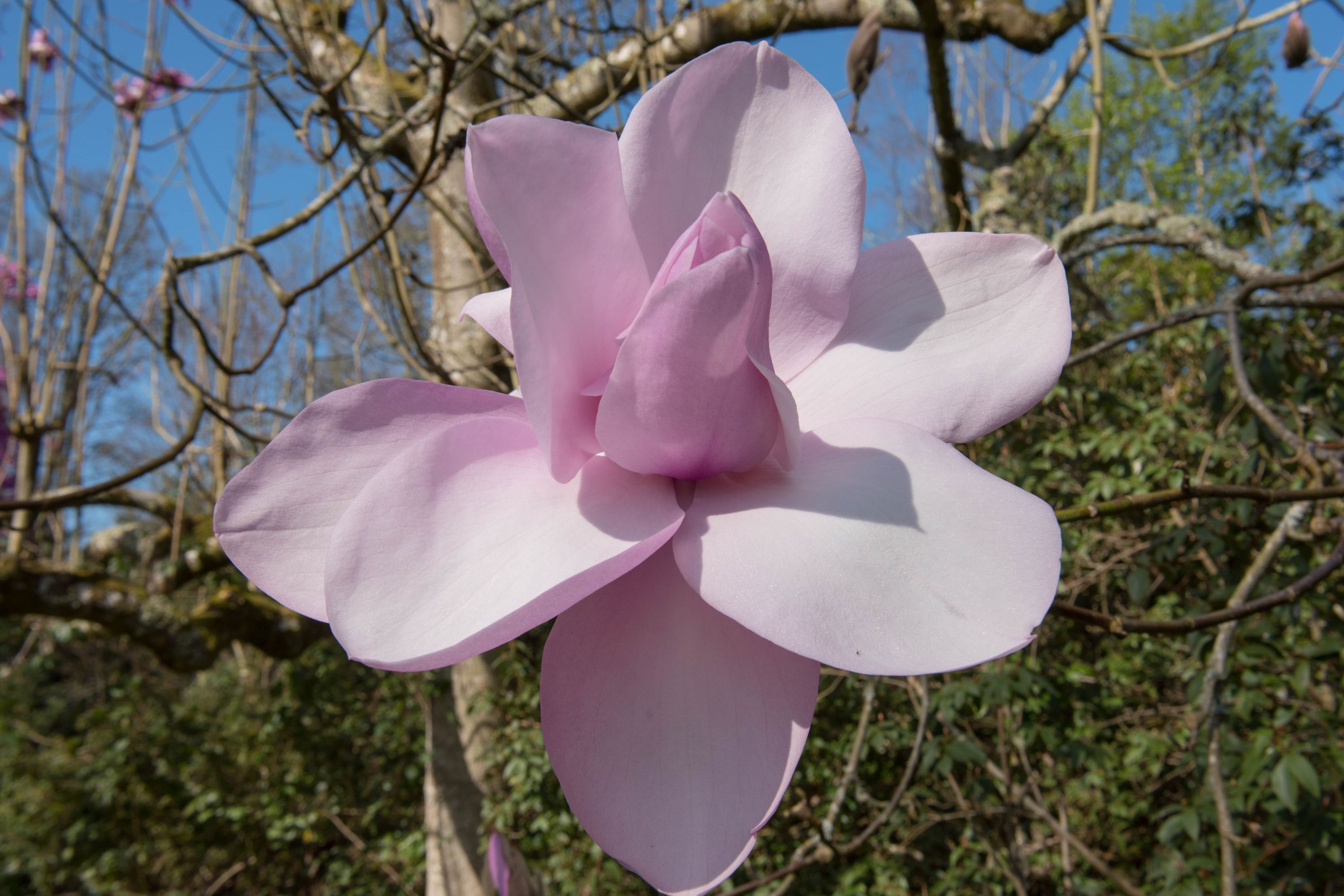Sprenger's magnolia
(Magnolia sprengeri)

Description
Magnolia sprengeri is a species of flowering plant in the family Magnoliaceae. Commonly known as the "Sprenger's magnolia" or the "pink lantern", this tree is native to China, where it grows in mixed forests, valleys, and along streams. It was named after the German botanist and horticulturist, Carl Ludwig Sprenger, who introduced the species to Europe in the late 19th century. Physical Description Magnolia sprengeri is a deciduous tree that can grow up to 30 meters tall and 1 meter in diameter. The bark is brownish-gray and smooth on young trees, becoming fissured and scaly on older ones. The leaves are oval-shaped, dark green, and glossy, measuring up to 20 centimeters in length and 10 centimeters in width. They have a pointed tip and a slightly wavy margin. In autumn, the leaves turn yellow before falling off. The flowers of Magnolia sprengeri are its most striking feature. They bloom in early spring, before the leaves emerge, and are held upright on long, bare stems. Each flower measures 10-15 centimeters across and is composed of nine to twelve tepals, which are thick and fleshy and have a pinkish-purple color. The flowers have a sweet fragrance and attract bees and other pollinators. Habitat and Distribution Magnolia sprengeri is native to China, where it is found in the provinces of Anhui, Fujian, Guangdong, Guangxi, Guizhou, Hubei, Hunan, Jiangsu, Jiangxi, Sichuan, Yunnan, and Zhejiang. It grows in mixed forests, valleys, and along streams at elevations of 200 to 2,500 meters above sea level. In its native range, Magnolia sprengeri can be found growing alongside other species of magnolias, as well as conifers, oaks, maples, and other broadleaf trees. It prefers well-drained soil and can tolerate some drought, but is sensitive to frost and wind. Magnolia sprengeri has been introduced to other parts of the world and is cultivated as an ornamental tree in gardens and parks. It can be found in botanical gardens and arboreta in Europe, North America, and elsewhere. Cultivation and Uses Magnolia sprengeri is a popular ornamental tree, prized for its beautiful flowers and elegant habit. It prefers moist, well-drained soil and full sun or partial shade. It can tolerate some drought and air pollution but is sensitive to frost and wind. The tree is best propagated by seed or by grafting onto a rootstock. The flowers of Magnolia sprengeri are sometimes used in traditional Chinese medicine to treat respiratory and digestive problems. The bark and leaves contain alkaloids, flavonoids, and other compounds that have been shown to have anti-inflammatory, antioxidant, and anticancer properties. Varieties Several varieties of Magnolia sprengeri have been described, based on differences in flower color, size, and shape. These include: Magnolia sprengeri var. sprengeri: This is the most common variety, with pinkish-purple flowers and large, showy tepals. Magnolia sprengeri var. diva: This variety has smaller, more deeply colored flowers with a reddish tint. Magnolia sprengeri var. elongata: This variety has narrower, more elongated tepals than the typical form. Magnolia sprengeri var. alba: This rare variety has white flowers, and is sometimes called the "white lantern". Magnolia sprengeri var. sanderae: This variety has a smaller, more compact habit and is often grown as a shrub. Conservation Status Magnolia sprengeri is not currently listed as endangered or threatened by the International Union for Conservation of Nature (IUCN). However, like many plant species, its natural habitat is under pressure from deforestation, urbanization, and other human activities. Efforts are being made to conserve wild populations of the species and to promote its cultivation in gardens and parks around the world to prevent its decline in the future. Conclusion Magnolia sprengeri is a magnificent tree that deserves a place in any garden or landscape. Its stunning flowers, which appear early in the season when few other plants are in bloom, make it a valuable addition to any collection. With proper care and cultivation, this species will thrive for generations, providing beauty and enjoyment for all who encounter it.
Taxonomic tree:







